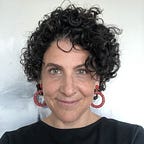The Local News Lab recipe for a great project kick-off
How we ran a productive, collaborative, and engaging first meeting and started our project on the right foot
A good kick-off meeting can help break the ice between collaborators and create a rapport between teammates. In this post, I share how we ran our virtual kick-off meeting with our second cohort of newsroom partners and formed some essential pillars for the project that we have revisited repeatedly throughout the past several months. To set the stage, the lab is based in New York City, our internal staff mostly work remotely and our partners are distributed across the U.S.
There are several elements that went into this meeting which I’ll outline below but it is important to note that during each workshop we’ve held, we have tried hard to not over-complicate or over-program as things inevitably take longer than we expect. We also always leave room for impromptu adjustments in case we end up following a tangent and or an exercise falls flat. During this kick-off, our discussions around goals for the project went long (folks were engaged — excellent!) so we ran our last exercise asynchronously and revisited those notes in a later session.
Framing
Sending out an agenda ahead of time is ideal so that everyone can be as prepared as they can and want to be (often introverts especially appreciate this). However, not everyone reads the meeting invite so framing the meeting in terms of the agenda along with our goals and intentions is helpful in setting everyone’s expectations for what is about to transpire.
Check-in/check-out questions
Opening and closing virtual meetings and workshops with check-in and check-out questions can be as light or deep as you want and is a great way to bookend a session with a dose of humanity. If folks are not yet acquainted with each other, this can help build rapport. This is a neat question generator resource if you’re stuck for ideas. In this particular session our check-in question was “who is your youngest friend?”.
Introductions
We followed our opening question with introductions. Here we asked for people to contribute the standard “here’s who I am, what I do, for which organization, and where I do it” along with why they wanted to participate in the project.
Code of conduct + Safety/accountability mechanism
As part of our welcome letter of agreement with our partners we include a code of conduct that we reminded everyone of during the kick-off meeting. At this point we reminded everyone of the standards we would be upholding, how to report any incidents, and how we would be holding everyone (including ourselves) accountable.
Goals for the project
This was the meat of the kick-off: we had a full group discussion about what each of our goals were (both our partners and the lab team itself) and took careful notes. We have come back to these goals repeatedly throughout the project so far, to ensure we are working to meet them.
At this point we ran out of time — a core tenant of ours is to end on time or early so we asked for our partners to contribute to the final exercises asynchronously so we could still capture their thoughts without running over our allotted time. These were captured using Miro and shared to our private cohort Slack channel (and emailed as back-up while our partners got used to checking Slack for messages from us).
Ask/Give
Here, we requested that each participating member of the cohort fill in a table with areas in which they need assistance (“Ask”) along with areas of expertise they have that they would be willing to share with their fellow cohort members (“Give”). Through this exercise, we all gained more insight into each partner’s strengths and opportunities for growth and how we all might work together to pool our resources and capabilities.
Capacity building
Finally, while our core project is to build a data product, our aim is also to help build expertise (or what we call capacity) within our partners’ organizations and the journalism industry at large. So, our last activity in this session was to identify areas where our partners needed or wanted to build capacity so we could provide resources and training to improve proficiency in those areas later on in the project. In this way, the lab sought to produce a technical product to help improve audience engagement as well as to help build the very human capacity to improve understanding, insight, and process within the day to day operations of producing journalism — both of which we believe are essential ingredients in the sustainability of new organizations.
About the Local News Lab
The Brown Institute’s Local News Lab is a team of engineers, designers, and data scientists working to build AI-powered, open-source products to help support local newsrooms and their businesses. The team’s work is collaborative, partnering with small- to medium-sized publishers across the country.
While large national news outlets can have groups of data scientists in-house producing insights and products that optimize audience engagement and drive reader revenue, helping ensure their sustainability and survival; local and community-based newsrooms are often left stretching their limited resources in every direction. We aim to help our partner organizations overcome the barriers to mobilizing the best data science to support their business strategies.
We are grateful to the Charina Endowment and the John S. Knight Foundation for supporting our work.
Curious about what we do? Send me an email and get in touch.
